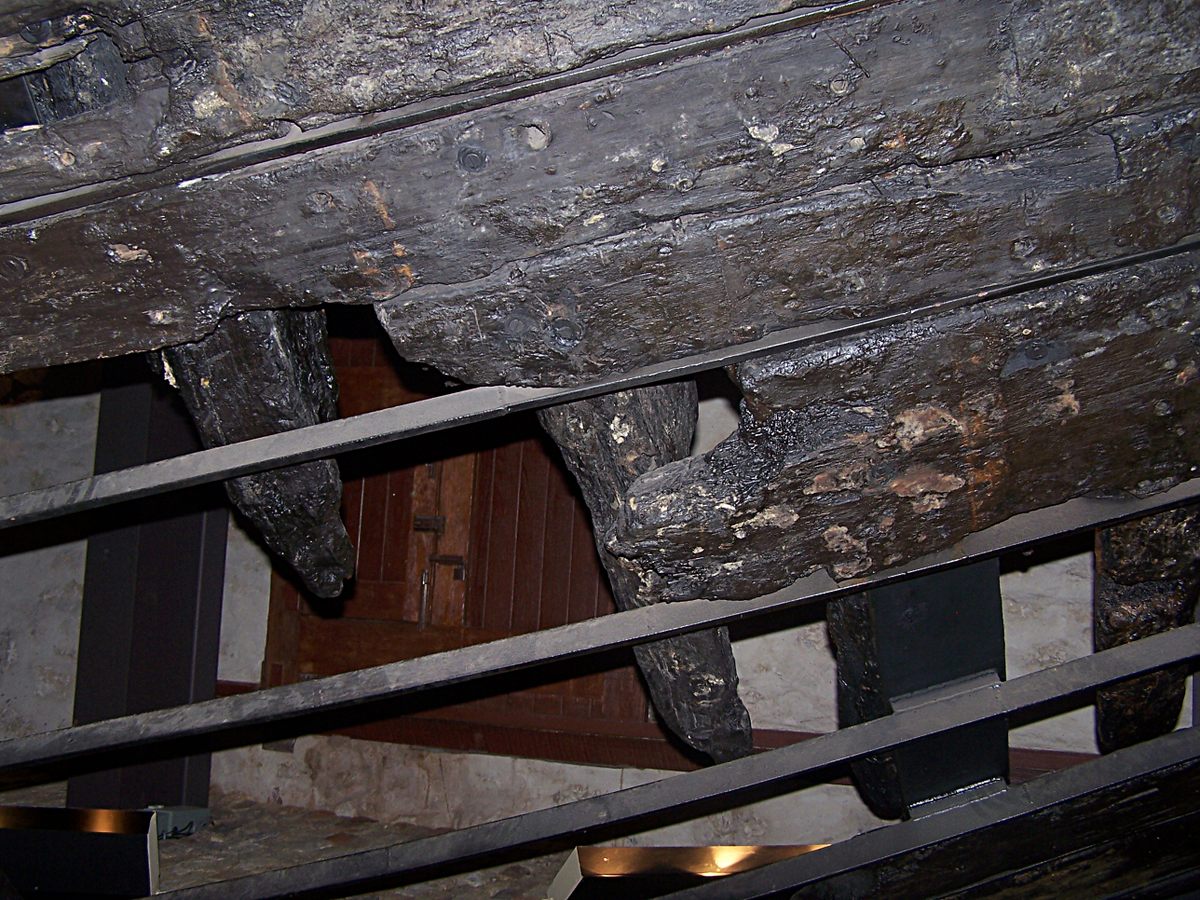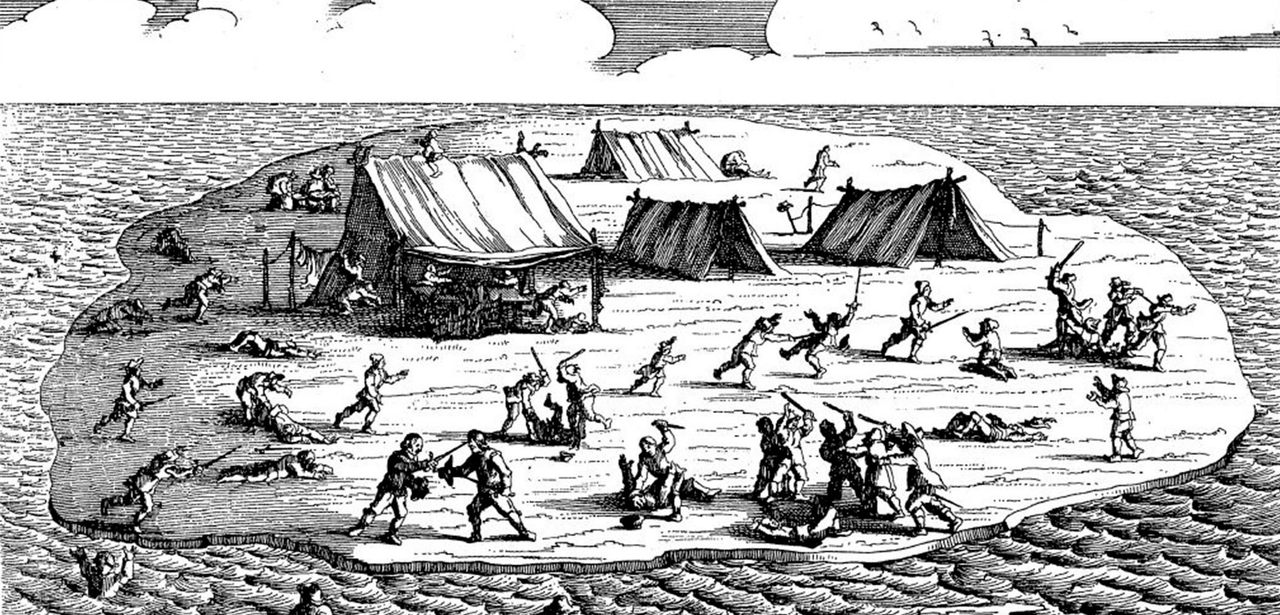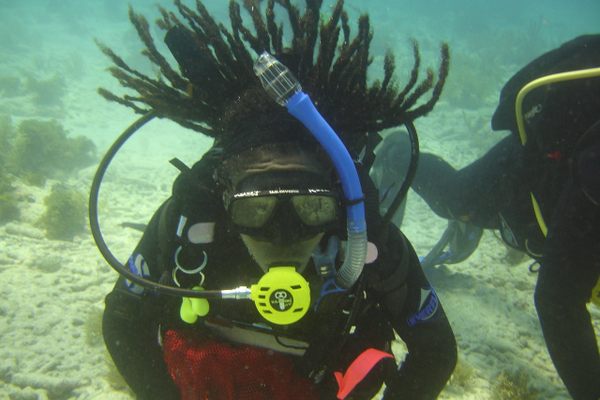The Batavia’s Tale of Mutiny and Murder Gets a New Chapter
Archaeologists have unearthed new details of the 400-year-old bloodshed on a remote Australian island.
This article is from Hakai Magazine, an online publication about science and society in coastal ecosystems. Read more stories like this at hakaimagazine.com.
He knew the missing skeleton was here. Somewhere. It was 2014, and Daniel Franklin, a forensic anthropologist at the University of Western Australia, was on Beacon Island, a tiny patch of land off Australia’s west coast. The remains he was looking for belonged to a traveler who, in 1628, boarded the Batavia, one of the most ill-fated ships in history.
Franklin was pretty sure the skeleton was here because, in the 1960s, archaeologists had found a skull covered in heavy fractures in the same place. At the time, the rest of the individual—everything from the neck down—was trapped under the concrete floor of a fisherman’s hut. But by 2014, construction workers were clearing the island and, as they took the fisherman’s hut apart, Franklin had a chance to search for the absent skeleton. Despite toiling in the sand for days, he found nothing.
Then, on his last day on Beacon Island, just before he flew out, Franklin decided to have one more look; a final chance to uncover the long-lost remains of a person who, four centuries ago, had traveled from one side of the world to the other. A soldier, a member of the crew, or a passenger seeking a better life. Whoever they were, they had only found a gruesome death.
Franklin grabbed a trowel and started digging.

At one time, long before it became a name inextricably associated with catastrophe and terror, the Batavia was a brand-new ship of the Dutch East India Company (VOC). With 341 people on board, she departed the Netherlands in October 1628 on her maiden voyage, bound for what is now Jakarta, Indonesia. But after sailing for thousands of kilometers, she smashed into a reef near Beacon Island in June 1629. Dozens of passengers died attempting to swim ashore. Finding the island bereft of fresh water, the Batavia’s captain, Francisco Pelsaert, set out to sea in a small boat to seek help.
During the captain’s absence, Jeronimus Cornelisz, the ship’s junior merchant, seized his moment. Historians have theorized that Cornelisz sought to take the ship’s treasure and become a pirate. Whatever his exact motives, he and a contingent of men mutinied, killing many of the ship’s passengers and crew in an attempt to control the island. It was a bloodbath. Of the Batavia’s 341 original voyagers, only 122 survived the ordeal.
Traces of the dead were left scattered here and there in the sand. But the island has not given up its secrets easily. Since the mid-20th century, archaeologists have been slowly unearthing artifacts associated with the mutiny, and in May, researchers published two new papers detailing a swath of fresh discoveries.
Among them was the skeleton that had been missing for half a century. In his last-ditch search for it back in 2014, Franklin had dug deeper and deeper below the former fisherman’s hut. Slowly and gingerly, he shifted the sand aside. Then, to his relief, about 40 centimeters down, he found it: the bones of a human leg. After all that poking around in the wrong place, he had picked the right spot at last.

“It was probably a little bit more luck than anything else, but let’s call it a smart archaeological deduction,” says Franklin.
Analyzing the skeleton, he knew, might offer key new insight into who the victim was. The next year, 2015, Franklin and his colleagues returned to fully excavate the remains. They uncovered an extremely well-preserved skeleton and, crucially, a small teardrop-shaped piece of skull. Like a gruesome puzzle piece, the fragment slotted perfectly into a hole that mars the right side of the cranium excavated 51 years earlier, more or less proving they had found the right bones.
The teardrop bone fragment, say Franklin and his colleagues in a paper about the discovery, suggests this person died from a heavy blow to the head, likely with a bladed weapon. Large fractures elsewhere around the cranium hint they suffered two or perhaps three other forceful injuries. He was probably murdered.
“Whoever killed this person, they did a very thorough job,” says Franklin. “It was a very violent end.”
Based on the proportions of the bones, Franklin and his colleagues say, this was most likely a man in his 20s or early 30s. He was 1.7 meters tall and apparently reasonably healthy.
It is difficult to overstate the horror of what happened to the passengers of the Batavia. Cornelisz and the other mutineers ruled the island for three and a half months. Nearly 200 men, women, and children died or were murdered under Cornelisz’s command, while some of the younger women were raped and kept as sex slaves.
A separate paper by multiple authors including Franklin describes previously undetected mass graves on Beacon Island, including one with seven individuals positioned neatly on their backs and with their arms folded. In contrast with the apparent murder victim, who was found with one arm above his head—as though he had been dragged into a shallow grave—these people seem to have been buried with some dignity. Perhaps they were among the Batavia passengers who died of drowning, illness, or starvation before, as Franklin puts it, “all hell broke loose.”
When Captain Pelsaert finally returned to Beacon Island with rescuers, he arrived in the middle of a battle between the mutineers and a band of resisters. Cornelisz and several of his co-conspirators were captured, tried, found guilty, and hanged.
On nearby Long Island, about a kilometer from Beacon Island, Franklin and his colleagues found possible evidence of this final chapter: a tonne of heavily corroded iron fastenings typical of the sort used by the VOC in the 17th century. These are likely the remains of the gallows built to hang Cornelisz and his fellow mutineers.
This is a new discovery, says Mike Dash, a historian and author of Batavia’s Graveyard, a book about the mutiny.
“The general depiction of a hideous, tumultuous, confusing, and terrifying series of events—which is what’s laid out in the written record—the archaeological evidence not just confirms that but enriches it,” says Dash.” To wit, he suggests it might now be possible to try and identify the victim whose skeleton was unearthed by Franklin.
Franklin says that Beacon Island has been mined so thoroughly for historical material there is little reason to carry out further excavations. But Dash hopes more archaeological or written artifacts linked to the Batavia could yet emerge. “We haven’t seen the end of this story,” he says.

























Follow us on Twitter to get the latest on the world's hidden wonders.
Like us on Facebook to get the latest on the world's hidden wonders.
Follow us on Twitter Like us on Facebook